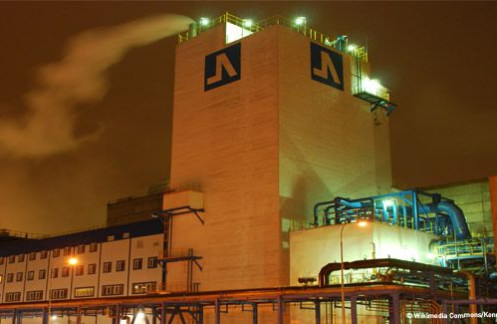We can now calculate loads in almost real time. This enables us to integrate the molten metal optimally in terms of lead time and the assignment of ladles in the loads which would be very hard to do manually.Thierry CHIARAMIDevelopment Engineer - Pechiney Rhenalu
The Neuf-Brisach foundry in Alsace, France, is part of the BALC (can stock, automotive, standard rolled products) division of Alcan’s aluminum sector. It is composed of two production shops.
The first, the recycling shop, is equipped with 4 furnaces processing difficult, often coated, waste. It produces a molten metal delivered to the slab production shop.
The second production shop is equipped with 6 furnaces producing aluminum slabs from internal production discards, external discards and waste, new metal, components allowing a targeted chemical composition to be achieved and molten metal from the recycling furnaces. These slabs are used to supply the downstream conversion shops to manufacture sellable products.
Many aluminum products are manufactured in this plant, ranging from car body sheets for the automotive industry to foils and strips for beverage and food cans and aluminum foil for food packaging, through heat exchangers and construction equipment.
In 1997, Pechiney Rhenalu launched SIF (Foundry Information System), an ambitious project whose principal objective was the real-time processing of all a foundry’s data, from planning to archiving technical data of the entire conversion process. The heart of the system was the optimization of raw materials when loading the furnaces.
Calculating a furnace load is a complex problem. The main complexity lies in achieving the targeted chemical composition for the load to calculate, using a mixture of different chemical compositions and integrating the molten metal produced by the recycling furnaces. For the latter, the lifetime is limited by evident thermal constraints but also by limited stock, thus integrating it in the furnace loads as it is produced is a necessity.
For each load, one must find the best compromise that will meet metallurgical constraints, operating requirements, the production schedule and costs while optimizing the use of solid and molten raw materials available from the stock. This task is carried out 365 days a year, 24×7 by the load planners.
At the start of each shift, they conduct a visual inventory of the stock and plan the next 15 loads, which corresponds to approximately 24 hours of load for the 5 furnaces of Neuf-Brisach.
This manual execution of load calculation, that for the most part rests on the experience of the casters (with further problems related to the transmission of know-how), had two other drawbacks :
- difficulty in meeting the cost-efficiency requirements of just-in-time production with calculations 24-hours in advance,
- low optimization of available stocks.
In many cases, the operator could favour a particular constraint to the detriment of all the others, for example reducing container discards to the detriment of optimizing the furnace burden. Such choices did not necessarily contribute to optimizing the load.
Based on a mock-up developed by the Pechiney research center in Voreppe, Eurodecision, via successive prototyping, produced the load calculation module (“HORACE”), designed for integration in the SIF project. Development through prototyping enabled users to quickly evaluate the software’s functionality and ergonomics, and helped convince even the most sceptical that it was now possible to automatically calculate furnace loads.
After a few problems on start-up to adjust the application to shop operation, Horace now allows nearly real-time operation. Load calculation can be launched less than 3 hours before the metal is required.
For a given load, Horace optimizes the composition and tonnage fed to the furnace during the previous load and the type of casting, its alloy, format, number of slabs and length of casting. The stock situation and the composition of components are also taken into account. This processing, that lasts less than a minute, offers planners the possibility of launching a new calculation directly from the load preparation trolleys. Horace can use several parameters to optimize the load according to one-off objectives, lsuch as costs, operating constraints or raw material consumption.
Results
Two years after project start-up, Alcan’s plant of Neuf-Brisach observed a significant reduction in the consumption of new metal and a better use of hard-to-recycle discards. The solution offers load calculations almost just-in-time and load optimization, whatever the operator’s experience level. Several planner jobs in two 8-hour shifts were replaced by a single administrator per shift.






